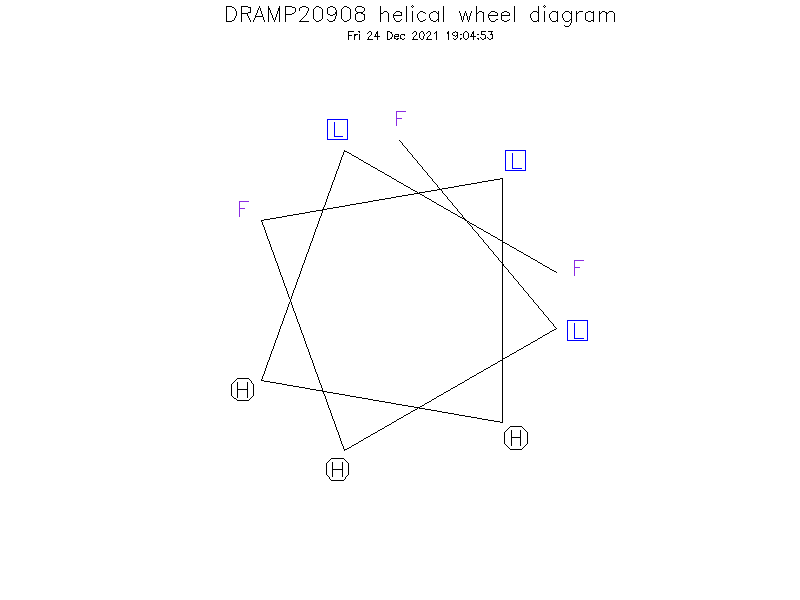General Information
-
DRAMP ID
- DRAMP20908
-
Peptide Name
- Ctry2459-H3 (Ctry2459 peptide derivative, His-rich)
-
Source
- Synthetic construct(from a scorpion venom peptide library)
-
Family
- Derived from the peptide Ctry2459
-
Gene
- Not found
-
Sequence
- FLHFLHHLF
-
Sequence Length
- 9
-
UniProt Entry
- No entry found
-
Protein Existence
- Synthetic
Activity Information
-
Biological Activity
- Antimicrobial, Antiviral
-
Target Organism
-
- [Ref.23415044] Virus: Hepatitis C virus ( EC50 = 0.85 μg/ml ).
- Cytotoxic: Huh7.5.1 cells (CC50>500 μg/ml)
-
Hemolytic Activity
-
- [Ref.23415044] HC50 = 416.4 μg/ml against human red blood cells.
-
Cytotoxicity
-
- [Ref.23415044] CC50>500 μg/ml against Huh7.5.1 cells
-
Binding Target
- Not found
Structure Information
-
Linear/Cyclic
- Linear
-
N-terminal Modification
- Free
-
C-terminal Modification
- Amidation
-
Nonterminal Modifications and Unusual Amino Acids
- None
-
Stereochemistry
- L
-
Structure
- Not found
-
Structure Description
- Not found
-
Helical Wheel Diagram
-
PDB ID
- None
-
Predicted Structure
- There is no predicted structure for DRAMP20908.
Physicochemical Information
-
Formula
- C63H83N15O10
Absent Amino Acids
- ACDEGIKMNPQRSTVWY
Common Amino Acids
- FHL
Mass
- 1210.45
PI
- 7.02
Basic Residues
- 3
Acidic Residues
- 0
Hydrophobic Residues
- 6
Net Charge
- +3
-
Boman Index
- 972
Hydrophobicity
- 1.133
Aliphatic Index
- 130
Half Life
-
- Mammalian:1.1 hour
- Yeast:3 min
- E.coli:2 min
Extinction Coefficient Cystines
- 0
Absorbance 280nm
- 0
Polar Residues
- 0
DRAMP20908
Comments Information
Function
- Inhibits hepatitis C virus(HCV) infection via inactivating infectious viral particle. However, it cannot suppress established infection because of the poor cellular uptake and restriction of endosomes.
Literature Information
- ·Literature 1
-
Title
- Design of histidine-rich peptides with enhanced bioavailability and inhibitory activity against hepatitis C virus.
-
Pubmed ID
- 23415044
-
Reference
- Biomaterials. 2013 Apr;34(13):3511-22.
-
Author
- Hong W, Zhang R, Di Z, He Y, Zhao Z, Hu J, Wu Y, Li W, Cao Z.

